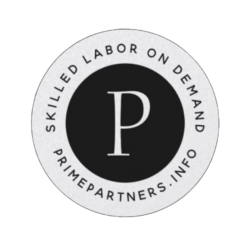Precision Cooling Technician Interview Questions and Answers
Overview of Required and Recommended Qualifications
Required Certifications and Educational Background
- High School Diploma or GED: A basic educational foundation is typically required.
- Technical School Certification: Completion of a technical or vocational program in HVAC (Heating, Ventilation, and Air Conditioning) is often necessary.
- EPA 608 Certification: Required for handling refrigerants. Ensure familiarity with Section 608 of the Clean Air Act.
- Refrigeration License: Some states require additional licensing specific to refrigeration.
Recommended Certifications and Industry Qualifications
- Certified HVAC Technician: Enhances credibility and demonstrates a commitment to the field.
- NATE Certification (North American Technician Excellence): Validates expertise in HVACR (Heating, Ventilation, Air Conditioning, and Refrigeration).
- BAS (Building Automation Systems) Certification: Relevant for technicians working with integrated systems.
- Degree in Mechanical Engineering or related field: Provides a deeper understanding of system mechanics and design.
Interview Questions and Answers
Technical Questions
1. What are the key components of a precision cooling system, and how do they function together?
- Answer: Key components include the compressor, condenser, evaporator, and expansion valve.
- Compressor: Circulates refrigerant, compressing low-pressure gas to high-pressure gas.
- Example: In a data center, the compressor must efficiently handle variable loads to maintain stable temperatures.
- Condenser: Releases heat from the refrigerant to the outside air, turning high-pressure gas to liquid.
- Context: Ensure proper airflow and maintenance to avoid overheating.
- Evaporator: Absorbs heat from the environment, cooling the air as refrigerant evaporates.
- Outcome: Efficient heat exchange results in consistent cooling.
- Expansion Valve: Regulates refrigerant flow into the evaporator.
- Best Practice: Regularly check for blockages to maintain pressure balance.
- Compressor: Circulates refrigerant, compressing low-pressure gas to high-pressure gas.
- Pitfalls: Avoid incorrect sizing of components, leading to inefficiency.
- Follow-up: Discuss specific brands or models you have experience with.
2. How do you troubleshoot a malfunctioning compressor in a precision cooling system?
- Answer: Begin with a systematic approach:
- Check Power Supply: Ensure the compressor is receiving power.
- Example: A tripped breaker might indicate electrical issues.
- Inspect for Leaks: Use leak detectors to find refrigerant leaks.
- Context: Leaks reduce system efficiency and require immediate repair.
- Evaluate Pressure Levels: Use gauges to check for abnormal pressure.
- Outcome: High or low pressure can indicate blockages or valve issues.
- Test Components: Use multimeters to test capacitors and relays.
- Scenario: Replacing a faulty capacitor can restore compressor function.
- Check Power Supply: Ensure the compressor is receiving power.
- Reasoning: A systematic approach ensures all potential issues are addressed.
- Follow-up: How do you document and communicate these findings?
Behavioral Questions
3. Describe a time when you had to work under tight deadlines. How did you manage your tasks?
- Answer: Highlight time management and prioritization skills.
- Example: During a critical server room installation, I was tasked with configuring the cooling system in a single weekend.
- Approach: Created a detailed schedule, delineating tasks into priority levels.
- Outcome: System was installed without delays, preventing potential overheating.
- Alternative Considerations: Allocated tasks to team members based on strengths.
- Example: During a critical server room installation, I was tasked with configuring the cooling system in a single weekend.
- Best Practices: Always have contingency plans.
- Follow-up: How do you handle unexpected challenges during tight timelines?
Situational Questions
4. How would you handle a situation where a client is dissatisfied with the cooling system’s performance?
- Answer: Emphasize communication and problem-solving.
- Acknowledge the Issue: Listen to the client’s concerns without interruption.
- Example: A client complained about inconsistent temperatures in a server room.
- Investigate: Conduct a thorough assessment to identify potential problems.
- Scenario: Found that air distribution was uneven due to obstructed vents.
- Propose Solutions: Offer corrective actions and timelines.
- Outcome: Adjusted vent placements and provided a maintenance plan.
- Follow-up: Regularly check in to ensure continued satisfaction.
- Acknowledge the Issue: Listen to the client’s concerns without interruption.
- Pitfalls to Avoid: Never dismiss client concerns without investigation.
- Follow-up: What steps do you take to ensure long-term satisfaction?
Problem-Solving Questions
5. Describe a challenging problem you solved in a previous cooling system project.
- Answer: Focus on analytical skills and innovation.
- Problem: A cooling system was underperforming during peak hours.
- Analysis: Collected data on temperature fluctuations and system load.
- Context: Identified that peak load was higher than initial system capacity.
- Solution: Recommended and implemented a supplementary cooling system.
- Outcome: Improved performance and reduced energy consumption.
- Alternative Solutions: Considered upgrading the existing system but found it cost-inefficient.
- Problem: A cooling system was underperforming during peak hours.
- Best Practices: Always validate assumptions with data.
- Follow-up: How do you ensure your solutions are sustainable?
Additional Questions
6. What safety protocols do you follow when maintaining cooling systems?
- Answer: Adherence to industry standards is critical.
- PPE (Personal Protective Equipment): Always wear appropriate gear.
- Example: Gloves and goggles when handling refrigerants.
- Lockout/Tagout Procedures: Ensure all power sources are disabled during maintenance.
- Scenario: Prevents accidental activation of systems.
- Refrigerant Handling: Follow EPA guidelines to prevent leaks and exposure.
- Outcome: Maintain environmental compliance and personal safety.
- PPE (Personal Protective Equipment): Always wear appropriate gear.
- Pitfalls: Never bypass safety protocols for convenience.
- Follow-up: How do you keep up-to-date with safety regulations?
7. How do you prioritize maintenance tasks in a high-demand environment?
- Answer: Prioritization is based on impact and urgency.
- Critical Systems First: Address issues that could lead to system failure.
- Example: Prioritize server room cooling over non-critical areas.
- Preventive Maintenance: Schedule regular checks to avoid emergencies.
- Outcome: Reduces the likelihood of unexpected failures.
- Communication: Coordinate with stakeholders to minimize disruption.
- Scenario: Notify IT teams of maintenance schedules to prevent system downtime.
- Critical Systems First: Address issues that could lead to system failure.
- Best Practices: Use a maintenance management system for tracking.
- Follow-up: How do you handle conflicting priorities?
Continue with remaining questions, ensuring each has a detailed, comprehensive answer that covers various scenarios, best practices, and potential follow-ups.
More Infrastructure & Cooling Interview Guides
Explore more interview guides for Data Center positions.
Raised Floor Installer Interview Preparation
This guide equips job seekers with essential insights and strategies for excelling in a raised floor installer interv...
Data Center HVAC Technician Interview Preparation
This guide prepares job seekers for a Data Center HVAC Technician interview by focusing on key areas such as understa...
Environmental Monitoring Specialist Interview Preparation
This guide prepares job seekers for an Environmental Monitoring Specialist interview by covering key topics such as d...
Cooling System Engineer Interview Questions and Answers
This guide provides a comprehensive collection of interview questions and answers tailored for Cooling System Enginee...
Precision Cooling Technician Interview Questions and Answers
This guide provides job seekers with a comprehensive set of Precision Cooling Technician interview questions and answ...
Recent Articles
Check out more articles from Best Electrician Jobs about getting hired inthe electrical industry.
Best Job Board for Electricians
Discover the best job board for electricians! Boost your career with insights on salaries, training, and growth!
Improve Your Electrician Job Postings for More Applicants
Discover how to improve your electrician job postings for more applicants! Boost your career with insights on salarie...
What is the Highest Paying Electrician Role?
Discover the highest paying electrician roles and how to prepare for them. Learn about the skills and certifications ...
Industrial Electrician Careers in California
From manufacturing plants to data centers, industrial electricians play a vital role in California's economy. Discove...
Security Technician Interview Questions and Answers
Security technicians are essential in protecting our modern world. Learn what to expect in your Security Technician i...
Featured Jobs
-

- Company
- Prime Partners
- Title and Location
- Cable Technician
- Wyoming, MI
- Employment Type
- FULL_TIME
- Salary
- $25.16-$32.59/HOUR
- Team and Date
- Commercial
- Posted: 04/17/2025
-

- Company
- Prime Partners
- Title and Location
- Apprentice Electrician
- San Diego, CA
- Employment Type
- FULL_TIME
- Salary
- $24-$37/HOUR
- Team and Date
- Commercial
- Posted: 04/17/2025
-

- Company
- Prime Partners
- Title and Location
- Security Alarm Installer
- Mesa, AZ
- Employment Type
- FULL_TIME
- Salary
- $25.81-$30.68/HOUR
- Team and Date
- Commercial
- Posted: 04/17/2025
-
- Company
- Jackson Healthcare
- Title and Location
- Journeyman Electrician
- Alpharetta, GA
- Employment Type
- FULL_TIME
- Salary
- $30.6-$35.86/HOUR
- Team and Date
- Commercial
- Posted: 04/17/2025
-

- Company
- Prime Partners
- Title and Location
- Journeyman Electrician
- Gilbert, AZ
- Employment Type
- FULL_TIME
- Salary
- $40-$55/HOUR
- Team and Date
- Data Center
- Posted: 04/17/2025
-

- Company
- Prime Partners
- Title and Location
- Voice & Data Technician
- Glendale, AZ
- Employment Type
- FULL_TIME
- Salary
- $23-$35/HOUR
- Team and Date
- Commercial
- Posted: 04/17/2025
Best Electrician Jobs
Ready to get started?
Stop worring about manpower. And get back to what you do best.
Best Electrician Jobs is for Everyone
At Best Electrician Jobs, we are dedicated to fostering an inclusive environment that values diverse perspectives, ideas, and backgrounds. We strive to ensure equal employment opportunities for all applicants and employees. Our commitment is to prevent discrimination based on any protected characteristic, including race, color, ancestry, national origin, religion, creed, age, disability (mental and physical), sex, gender, sexual orientation, gender identity, gender expression, medical condition, genetic information, family care or medical leave status, marital status, domestic partner status, and military and veteran status.
We uphold all characteristics protected by US federal, state, or local laws, as well as the laws of the country or jurisdiction where you work.
 Best Electrician Jobs
Best Electrician Jobs